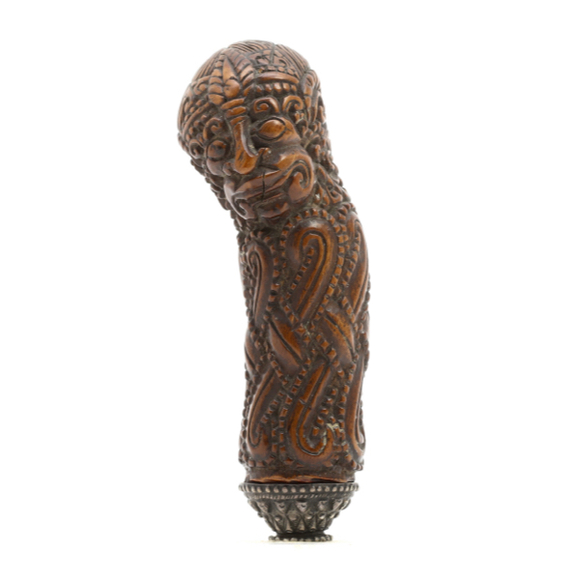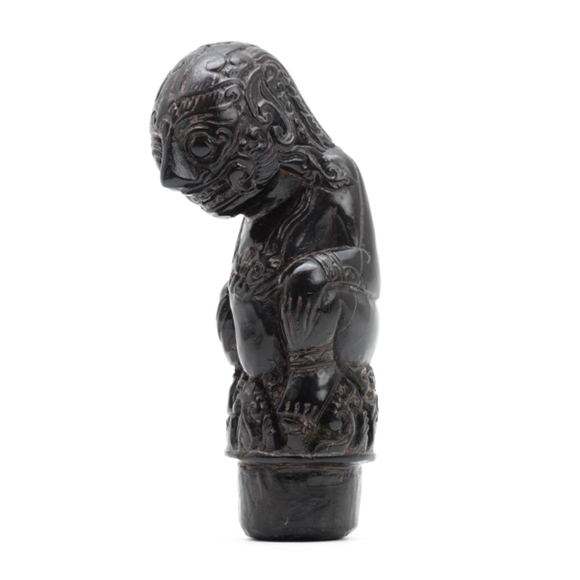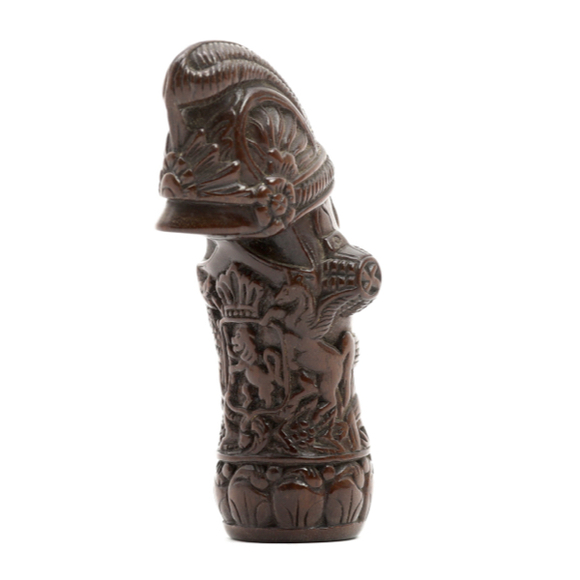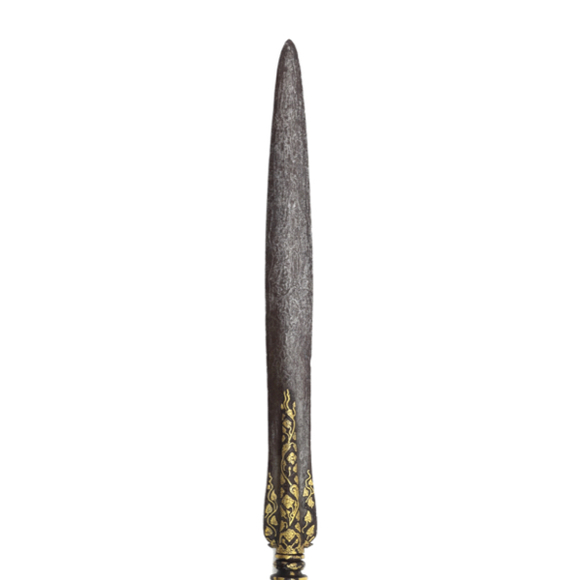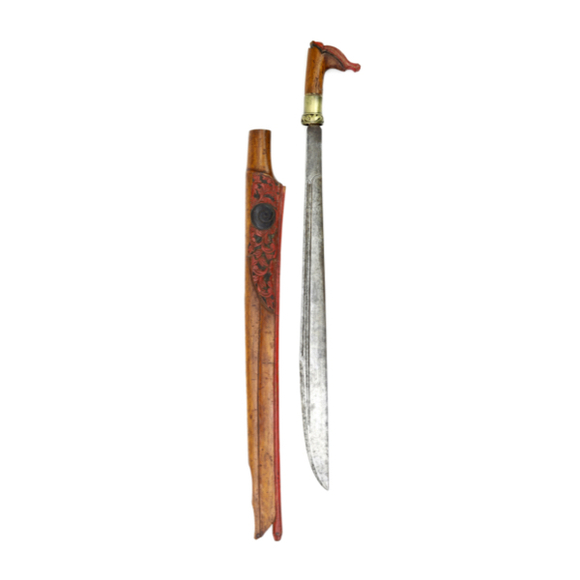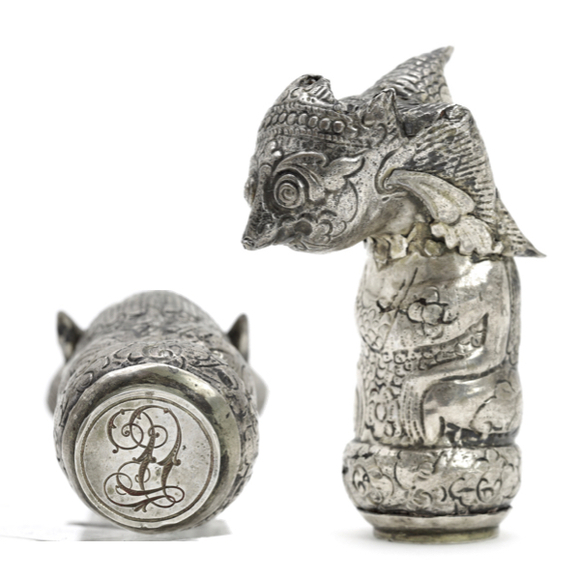19th century, probably originating from Cirebon.

Box 20.8 x 8.1 cm
Spurs 10.8 - 16.3 cm long
Blades 72 - 110 mm long
195 grams
Wood, steel, copper, brass
Bali, Indonesia
Late 19th to early 20th century
Introduction
Cockfighting was a popular pastime in most cultures, Indonesia being no exception.

An early illustration of a Javanese cockfight. First published in 1596.
Rijksmuseum accession number RP-P-OB-80.263.
A Dutch account published in 1843 briefly describes the practice on Java.1
"De hanen - gevechten toch behoren onder de grootste vermakelijkheden van den Javaan; hij zoude eenige uren ver loopen om er een bij te wonen, vooral indien de haan enige vermaardheid heeft. Een kring van aanschouwers sluit zich om de strijdende, wie sporen met stalen punten zijn voorzien, en wier strijdlust door alle mogelijke middelen in opgewekt; men wedt, applaudiseert, sifleert, in één woord, de Javaan wordt levendig; jammer echter, dat de hanengevechten dikwerf met menschen-gevechten eindigen, en de eigenaar van den overwonnen zich op dien van den overwinnaar wreekt, door men eenen houw van zijn kap- of snoeimes revenge te nemen voor zijnen lieveling. Zoo ver gaat de liefde van den Javaan voor den Koning der kippen!"
My translation:
"Cockfights are among the greatest sources of entertainment for the Javanese; they would walk several hours to witness a fight, especially when the fighting rooster has acquired some fame. A circle of spectators closes itself around the fighting, whose spurs have been fitted with steel points, and whose fighting spirit has been enhanced in all possible ways. People gamble, applaud, mock, in one word, becomes highly spirited. It is unfortunate, however, that cockfights frequently end in man-fights, where the owner of the defeated avenges himself at the owner of the victor by a strike of his machete."
The steel spurs mentioned, when not in use, were often stored in special cases called kotak taji, literally "spur case" in Indonesian.2
Notes to introduction
1. Soerakarta in eenige bijzonderheden geschetst. Published in: Tijdschrift voor Neêrlandsch-Indië: 5e Jaargang, 2e Volume. Batavia, Ter Lands Drukkerij, 1843. Page 469.
2. P. van Donk; Indonesian Cockspur Cases: Kotak Taji, Hes & De Graaf Publishers, 2000.
A set of cockspurs
Housed in a beautiful hardwood case is a set of ten steel cockspurs. The case is carved out of two plates of fine wood, connected with brass hinges. Polished a silky smooth on the outside, somewhat coarser on the inside. The shape of the case indicates it is probably from Bali.
Each spur is double-edged, with a center ridgeline, and still very sharp. The steel gives away hints of being of laminated construction. The base of each spur is a naturally patinated tang, some with grooves to roughen them. One of the tangs is wrapped with copper foil.
Late 19th to early 20th century.









A Madurese keris hilt, carved from dark hardwood in the form of a Dutch cuirassier.
Of typical South Borneo workmanship, but formed like a mandau from Kutai.

